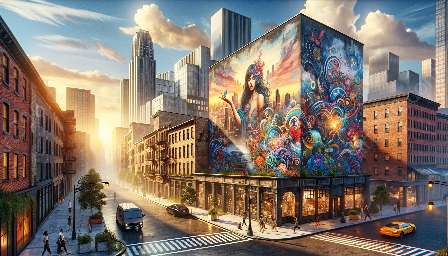Public art in urban spaces has the remarkable ability to transform ordinary landscapes into vibrant, thought-provoking environments. This transformative power not only enhances the aesthetic appeal of the city but also serves as a catalyst for social change, community engagement, and activism.
Understanding the Intersection
When delving into the world of public art, it is essential to acknowledge the intersection with street art and activism. Street art, a form of public art, holds the potential to challenge societal norms, express dissent, and amplify marginalized voices, making it an integral component of urban activism. By examining the relationship between public art and street art, we can gain insights into the transformative role they play in shaping urban spaces.
Public Art and Urban Activism
As a dynamic platform for societal discourse, public art fosters conversations on pertinent social issues. In urban spaces, public art installations offer a powerful medium for raising awareness about topics such as environmental sustainability, racial injustice, and community empowerment. By engaging the public in meaningful dialogue, public art becomes an instrument for igniting activism and instigating positive change.
Impact on Societal Change
Public art and street art have demonstrated their influence in inciting societal change. Through captivating murals, sculptures, and installations, artists convey messages that challenge societal conventions and prompt viewers to contemplate pressing matters. This impactful storytelling through art serves as a driving force for mobilizing communities and inspiring collective action towards a better, more equitable society.
Fostering Inclusive Urban Spaces
By integrating public art and street art into urban environments, cities can create inclusive spaces that reflect the diversity and narratives of their inhabitants. Artistic expressions in public spaces encourage a sense of ownership and belonging among residents, fostering a shared identity and promoting social cohesion. This inclusivity is essential for nurturing vibrant, thriving urban communities.
Conclusion
The transformative power of public art in urban spaces is evident in its ability to stimulate dialogue, provoke reflection, and galvanize communities towards meaningful change. When intertwined with street art and activism, public art becomes an influential force that reshapes the urban landscape and fosters a more equitable, engaged society.

